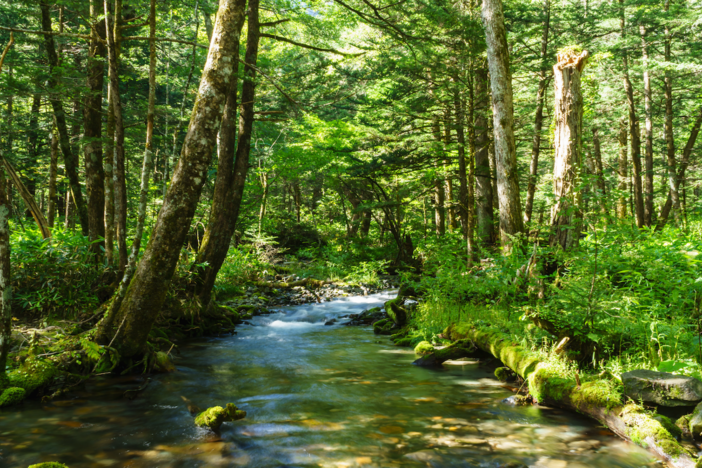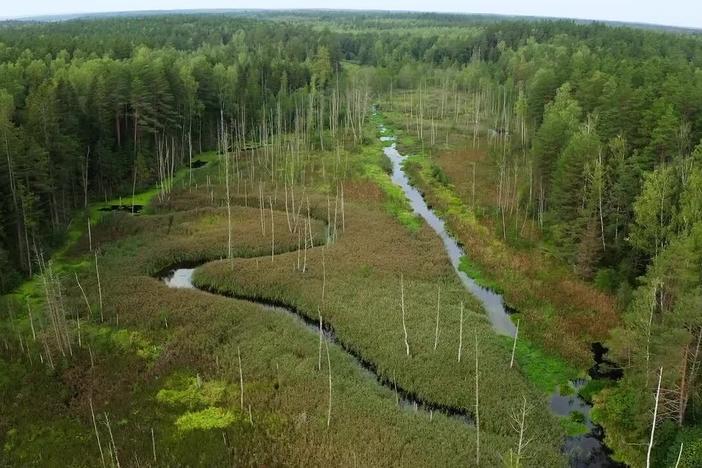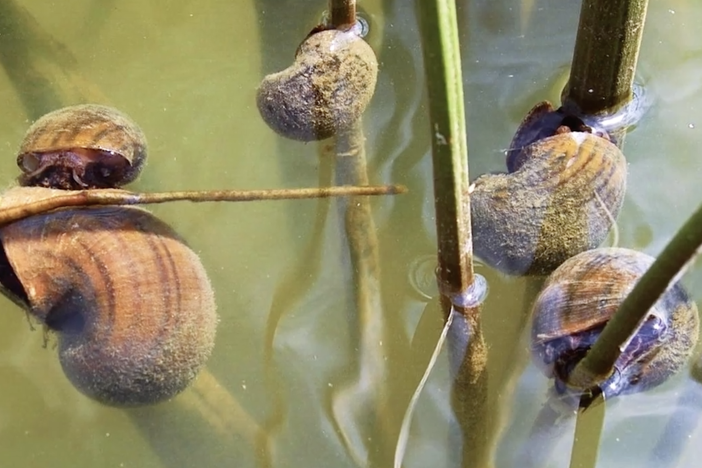Segment C: Interpreting Data to Support a Sustainable Ecosystem
Now it's time to determine our results! Do you think our freshwater ecosystem is clean and healthy or polluted? Follow Mike and Raiany's deductive reasoning in this episode of Let's Go Enviro.
Segment C: Interpreting Data to Support a Sustainable Ecosystem
There are certain features of an ecosystem that can be indicators of the chemical balance in that environment. Mike Kahle explains the difference between pollution-tolerant and pollution-intolerant organisms as well as the tests to administer when determining the health of an ecosystem.
Science
Analyze and interpret data to construct an argument of the necessity of biogeochemical cycles (hydrologic, nitrogen, phosphorus, oxygen, and carbon) to support a sustainable ecosystem.
Plan and carry out an investigation of how chemical and physical properties impact aquatic biomes in Georgia.
Describe macroinvertebrates and how they can be bioindicators.
Explain what biodiversity is and how it is important in maintaining ecosystem stability.
Discuss water quality parameters like dissolved oxygen and how it is important in aquatic ecosystems.
Explain the role of photosynthesis in the oxygen and carbon cycles.
Explain how Phosphorus and Nitrogen impact aquatic ecosystems and identify ways to reduce Phosphorus and Nitrogen in bodies of water.
abiotic: characterized by an absence of living organisms; without life
adaptation: in biology, the process of change in a living thing, over time, resulting in it being better able to survive and multiply
biodiversity: the variety of life in the world or in a particular habitat or ecosystem
biogeochemical cycle: any of the natural pathways by which essential elements of living matter are circulated
bioindicator: living organisms such as plants, planktons, animals, and microbes, which are utilized to analyze the health of the natural ecosystem in the environment
biome: a large naturally occurring community of flora and fauna occupying a major habitat, e.g. forest or tundra
biosphere: the regions of the surface, atmosphere, and hydrosphere of the earth (or analogous parts of other planets) occupied by living organisms
biotic: pertaining to life or living things
dissolved oxygen: the amount of oxygen available to living aquatic organisms
ecosystem: a community of living things, together with their environment
food chain: the order of events in an ecosystem, where one living organism eats another organism, and later that organism is consumed by another larger organism
macroinvertebrate: any animal lacking a backbone and large enough to see without the aid of a microscope
native species: a species that originated and developed in its surrounding habitat and has adapted to living in that particular environment
pollution-sensitive species: species that can only survive within a narrow range of environmental conditions and whose disappearance from an area is an index of pollution or other environmental change
pollution-tolerant species: species that can withstand a wider range of environmental conditions caused by pollution, including very low oxygen levels or high toxicity
tributary: a river or stream flowing into a larger river or lake
water cycle: the cycle of processes by which water circulates between the earth's oceans, atmosphere, and land, involving precipitation as rain and snow, drainage in streams and rivers, and return to the atmosphere by evaporation and transpiration
watershed: a land area that channels rainfall and snowmelt to creeks, streams, and rivers, and eventually to outflow points such as reservoirs, bays, and the ocean





